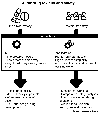Artificial Intelligence for Drug Toxicity and Safety
- PMID: 31383376
- PMCID: PMC6710127
- DOI: 10.1016/j.tips.2019.07.005
Artificial Intelligence for Drug Toxicity and Safety
Abstract
Interventional pharmacology is one of medicine's most potent weapons against disease. These drugs, however, can result in damaging side effects and must be closely monitored. Pharmacovigilance is the field of science that monitors, detects, and prevents adverse drug reactions (ADRs). Safety efforts begin during the development process, using in vivo and in vitro studies, continue through clinical trials, and extend to postmarketing surveillance of ADRs in real-world populations. Future toxicity and safety challenges, including increased polypharmacy and patient diversity, stress the limits of these traditional tools. Massive amounts of newly available data present an opportunity for using artificial intelligence (AI) and machine learning to improve drug safety science. Here, we explore recent advances as applied to preclinical drug safety and postmarketing surveillance with a specific focus on machine and deep learning (DL) approaches.
Keywords: adverse drug reactions; deep learning; machine learning; pharmacovigilance.
Copyright © 2019 Elsevier Ltd. All rights reserved.
Conflict of interest statement
Figures

References
Publication types
MeSH terms
Grants and funding
LinkOut - more resources
Full Text Sources

